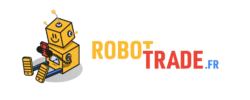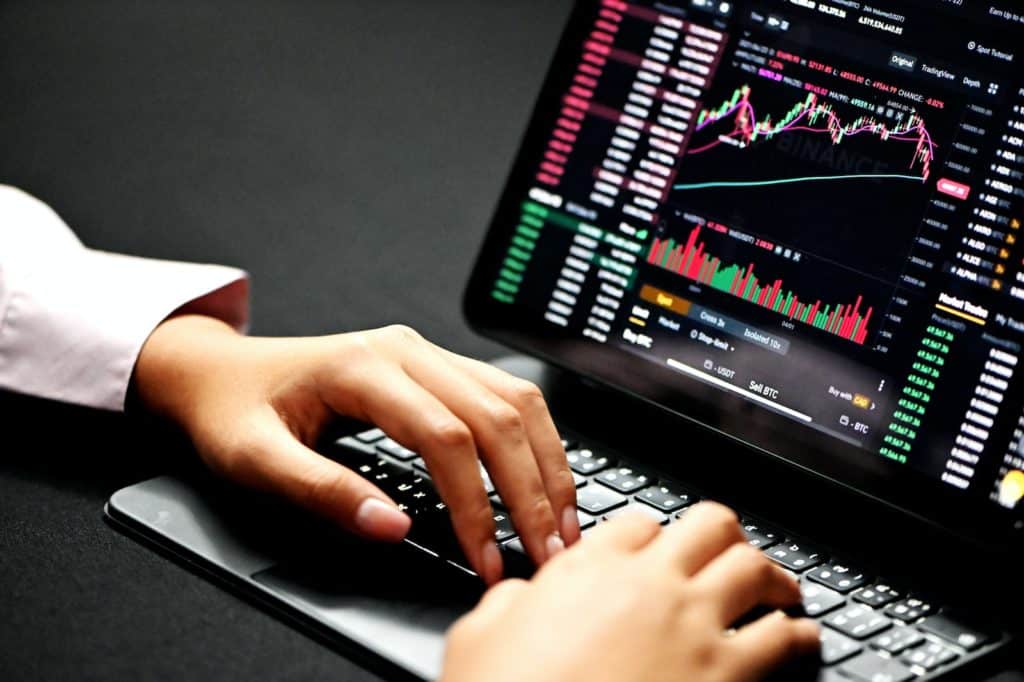What is online trading? A guide to the world of financial markets.
You may have come across the phrase "online trader" on an influencer's bio and wondered, " But what is online trading? " The good news is that you have now come across this article where we explain this activity.
Nevertheless, all forms of online trading boil down to a few basic principles, which should let you know how the process works. Let's start by describing some of the most coveted markets for online trading.
Financial markets for online trading
As mentioned earlier, online trading involves a variety of markets, but the most common ones for a particular trader are Forex, stocks and cryptocurrencies.
Forex Trading
We will start with the Forex market, as it is the largest financial market in the world, with an estimated daily trading volume of about $6.6 trillion. Of course, most of this volume does not come from individual traders like you and me, but from the world's banking giants and multinationals. Yet, we can still access this gargantuan financial market and swim with the sharks through our good friends - online brokers (more on that later).
For now, what you need to understand is that Forex trading, or FX, is theact of exchanging one currency for another. You may have been involved in foreign exchange trading if you have ever traveled to a foreign country and had to convert your money into the local currency. For example, at the airport or at a foreign exchange office, you may have had to convert euros into U.S. dollars.
The only difference is that with online Forex trading, the process takes place on your computer and only for speculative purposes. This means that the objective of online Forex trading is to make a profit by anticipating a change in the value of a particular currency. For example, if you think that the European economy will strengthen over time, you can buy Euros against other currencies.
When you visit a Forex trading platform, the first thing you will notice is that currencies are listed in pairs. For example, to trade US dollars for Euros, the currencies will be listed as EUR/USD. Using the previous analogy of being at the airport in a foreign country, you are exchanging one currency for another. In this case, you will be buying euros and selling your US dollars simultaneously at the airport or exchange office.
Since each country has a different currency, with the exception of the Eurozone, there are many permutations of currency pairs, but about 100 pairs are most commonly traded. The U.S. dollar is the most actively traded currency and the most important pairs are U.S. dollar crosses. These pairs are known as major currency pairs, such as :
- EUR/USD
- GPB/USD
- USD/JPY
- USD/CAD
- AUD/USD
The second category of Forex pairs includes those that are also very actively traded, but do not necessarily involve the US dollar. These are typically those from countries with strong economic ties such as :
- EUR/GBP
- EUR/JPY
- GBP/JPY
- GBP/CAD
- CHF/JPY
And finally, we have the exotic pairs, which may include the U.S. dollar, but always include the currency of an emerging economy. Here are some examples:
- EUR/TRY
- USD/ZAR
- USD/TRY
- USD/MXN
- USD/CNY
Most foreign exchange trading is done in the form of CFDs (contracts for difference), which are derivatives. This simply means that you are not actually buying currencies, but simply making a prediction of the strength of a specific currency against another.
Equity markets
Most people are at least familiar with the stock market from all the banter on the news and the Internet, although it is smaller than the foreign exchange market. Also, unlike foreign exchange trading which is decentralized and takes place over the counter, stocks are traded primarily through an exchange such as Euronext Paris. The most popular exchanges are based in the United States and Europe, but almost every country has an exchange.
Stocks are essentially shares in a company. Therefore, when you buy a stock, you own a piece of the company, even if it's a small piece. For example, if you buy shares of Apple, you own a very small portion of the company's more than $2 trillion market capitalization. That also means you are entitled to the company's dividends if it offers any. However, in order to have a vote in the company, you must be one of the company's largest shareholders.
The main reason to trade stocks is, again, to make a profit. For example, if you think Apple is going to sell more products this year, that means its profits are going to go up and therefore its value is going to go up. So if you own a share of the company, its value will increase over the course of the year. This is how Warren Buffett became one of the richest people in the world, by carefully selecting particular stocks to buy, and then holding on to those stocks while their value increases.
It is also possible to sell shares if you think a company's financial results will decline. Selling stock is essentially borrowing a stock and selling it to a buyer on the open market. When the stock price drops, you buy the stock at the lower price and pay back the broker who loaned you the stock. Although it sounds complicated, you don't have to worry about the process when you trade CFDs with a broker like eToro.
Cryptocurrency trading
Over the past decade, cryptocurrencies have become the most interesting products in the financial market, not only because of their novelty, but also becausethey are more profitable. For example, in the last 5 years, the price of bitcoin has increased by more than 700% while the value of Apple stock has increased by almost 300%. Keep in mind that Apple has been one of the best performing stocks in the world while bitcoin is not even the best performing cryptocurrency.
According to CoinMarketCap, there are about 20,000 crypto-currencies you can trade today. Bitcoin is the most popular and dominates more than 42% of the crypto market, which is worth nearly $1 trillion. Nonetheless, you can still trade any of the other crypto-currencies depending on your analysis.
As with all other financial markets, the goal of crypto trading is to make a profit when the value of the cryptocurrency increases. It's similar to stock trading where you buy an asset at a low price and sell it when the price goes up. But cryptocurrencies have other uses besides trading.
Some enthusiasts hold (or horde) cryptos simply because they want to support a project. You can also do other activities such as:
- Staking, which involves locking in your cryptocurrency holdings to earn rewards by becoming a validator.
- NFT - digital assets with a particular value based on user perception, such as art...
- DeFi - decentralized financial markets where you can perform traditional banking functions such as borrowing and lending.
How to access these markets?
Online Brokers
As mentioned earlier, most financial markets are traded by large financial institutions. They make huge trades worth billions of dollars every day, and historically, these markets were not accessible to individual traders. Fortunately, inventions such as theInternet and computers have allowed us to access these markets with the help of online brokers.
A broker is a company large enough to participate in the interbank market by pooling the funds of its users, no matter how small. Imagine a broker with 100,000 clients each with only $1,000 in deposits - that would be $100 million in assets under management (AUM) - and some of the largest brokers have millions of clients.
The broker therefore plays a key role in accessing the larger financial markets such as stocks and forex. In some cases, the broker may also provide leverage, which is essentially a loan that allows you to buy more of a product than you have in capital. For example, if the broker offers a leverage of 1:30, it means that you can buy a product worth 30x more than your capital. But you will still have to pay a deposit, called margin, of $10 for a $300 trade.
Cryptocurrency exchanges
While traditional financial exchanges have historically been the preserve of the wealthy, cryptocurrencies were created with the primary purpose of providing financial access to the general public. As such, you can receive cryptocurrencies from another person and store them in a cryptocurrency wallet on your computer or phone.
Even so, the most reliable source of crypto-currencies is crypto-currency exchanges. These are companies that hold massive reserves of crypto-currencies so that you can buy what you want at any time. Binance is, by far, the largest cryptocurrency exchange and has nearly 400 different cryptos that you can buy.
Keep in mind, however, that crypto regulations vary by region and you'll need to be aware of which ones may apply to you. In the United States, for example, crypto trading is legal and you will be taxed for any gains from your crypto trading. In France, too, cryptocurrencies are taxed on resale. Additionally, you should be careful when choosing a crypto exchange, as some have already been hacked, such as Mt. Gox, and lost their customers' crypto assets.
Trading strategies used in online trading
To be successful trading in any of the above markets, you must have a clear strategy to follow. After all, no one has ever succeeded by trading blindly in anything.
Technical analysis
It is essentially theuse of indicators and charting tools to study price movements. Among the most common indicators are moving averages, MACD, RSI and the stochastic oscillator. At the same time, drawing tools are used to identify pivot points and support and resistance levels.
The basic principle of technical analysis is that financial markets follow predictable patterns that can be identified. Then, the strategy is supposed to help you find those patterns and place trades. There is still some controversy about the reliability of this practice, but it remains the main strategy used by individual traders
Fundamental analysis
Financial markets react to developments in the financial sector, and fundamental analysis is perhaps the most reliable strategy. For example, if Microsoft reports that its revenue will increase in the next fiscal quarter, you can generally expect the company's stock to appreciate. Therefore, traders will keep an eye on any changes in the financial markets to predict the performance of certain assets.
Some of the best sources of information are financial news stations, newspapers and magazines. And more recently, social networks, especially Twitter. All of these sources relay essential information about financial assets that you can use to trade accordingly.


